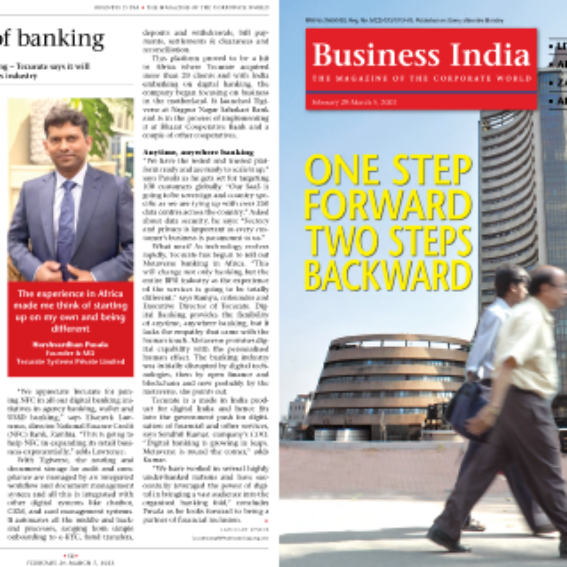
The banking industry is in the midst of a massive digital transformation. Technology has enabled unprecedented innovations in how people access and manage their finances. Digital banking has emerged as an area of rapid change and development. The future of digital banking promises further disruption through emerging technologies, new business models, and evolving customer expectations.
As the pace of change accelerates, the banking sector needs to anticipate coming trends to remain competitive and relevant. Mobile banking now dominates as more people rely on smartphones to manage their money on the go. Open banking is enabling new services through secure data sharing. Chatbots and voice assistants are streamlining more customer interactions.
Artificial intelligence and machine learning are enhancing security, personalization, and automation. Fintech startups continue to challenge the status quo. The future of digital banking will be defined by how traditional banks choose to respond and adapt to these disruptive forces reshaping the industry. The winners will be those that can leverage new technologies and partnerships to deliver innovative customer experiences.
The Rise of Fintech and Challenger Banks
The rise of financial technology (fintech) companies and digital challenger banks is transforming the banking industry. These innovative startups are leveraging technology to provide faster, more convenient, and often cheaper financial services compared to traditional banks.
Fintech companies utilize artificial intelligence, big data, and automation to streamline lending, payments, money transfers, and wealth management. Challenger banks, like Monzo and Revolut, are branchless digital banks that offer banking services through mobile apps and online platforms. By cutting out physical locations and legacy technology infrastructure, challenger banks can provide low-fee or free basic banking services.
The adoption of fintech solutions and challenger banks is accelerating, especially among tech-savvy Millennials and Gen Z. A 2019 survey found that 71% of Millennials would switch from their traditional bank to a challenger bank. Incumbent banks risk losing customers and market share if they do not keep up with this digital disruption.
To stay competitive, traditional banks must invest in digital transformation by modernizing IT systems, developing mobile apps, and partnering with or acquiring fintech startups. Banks should focus on personalizing services, using data analytics to gain customer insights, and streamlining processes with automation. Partnerships or acquisitions of fintech companies can help banks gain technical expertise and bring innovative products to market faster.
Leading Indian banks like ICICI Bank, HDFC Bank, and Kotak Mahindra Bank were among the first to roll out open banking APIs in India. ICICI Bank, for example, launched its open banking platform in 2018. The platform allows third parties to access over 200 APIs across accounts, cards, deposits, loans, bill payments, and more. HDFC Bank and Kotak Mahindra Bank also provide third parties-access to APIs across their range of banking products and services.
By providing access to open banking APIs, Indian banks are preparing for the digital banking revolution. They are opening themselves up to partnerships with fintech and technology companies to build innovative customer experiences. They are also gaining valuable insights into customer needs and behaviors from third parties that leverage their open APIs. Overall, the rise of open banking APIs positions Indian banks to benefit from the innovations of the wider fintech ecosystem and better compete in the digital economy. The future of banking in India is open.
AI, Big Data, and the Personalized Customer Experience
Personalized Banking Experiences
As AI and big data analytics continue to advance, banks will gain a much deeper understanding of their customers. Using AI to analyze huge amounts of customer data, banks can build highly personalized profiles and provide tailored products and services for each customer.
AI-powered chatbots and virtual assistants can have personalized conversations with customers to understand their unique needs and make useful recommendations. For example, AI may determine that a customer wants to save for their child’s college education. The AI assistant can then suggest specialized college savings plans and investment options tailored to the customer’s risk tolerance and time horizon.
Banks will also use big data and AI to predict customer needs and take proactive actions. If a customer’s income or spending patterns change in a way that suggests financial hardship, the bank may temporarily waive fees or reduce loan payments. Similarly, if a business customer’s transactions indicate plans for expansion, the bank can suggest new credit products to support their growth.
With embedded AI and access to customer data, banks can build apps that provide personalized insights and tools for managing money. Customers will have a consolidated view of all their accounts, budgets, bills, investments, and financial goals in one place. The apps can analyze customer data to provide useful metrics, spending alerts, and recommendations to improve financial well-being.
In summary, advanced AI, predictive analytics, and big data will enable banks to gain a 360-degree view of their customers and provide hyper-personalized experiences. Customers will receive tailored advice and products that match their unique financial situations and needs. As open banking frameworks take hold, customers will also be able to securely share data with third-party apps and services to build an even more comprehensive understanding of their finances. With personalization at the forefront, the future of digital banking looks bright.
Conclusion
As the world of banking continues its rapid evolution into a digital-first industry, financial institutions must stay ahead of emerging trends and innovations to meet customer needs, improve service, increase efficiency, and drive growth. By investing in advanced technologies like AI, blockchain, and open banking platforms, banks can gain valuable data insights, enhance security, streamline operations, and build more personalized customer experiences. However, with these opportunities come risks that must be managed, like data privacy concerns, job disruption, and the threat of cybercrime. Overall, the future of digital banking looks bright, as long as banks take a proactive and strategic approach to navigating an increasingly complex competitive landscape. With a focus on emerging technologies, open collaboration, and customer-centric design, banks around the world can thrive in the digital age.

















